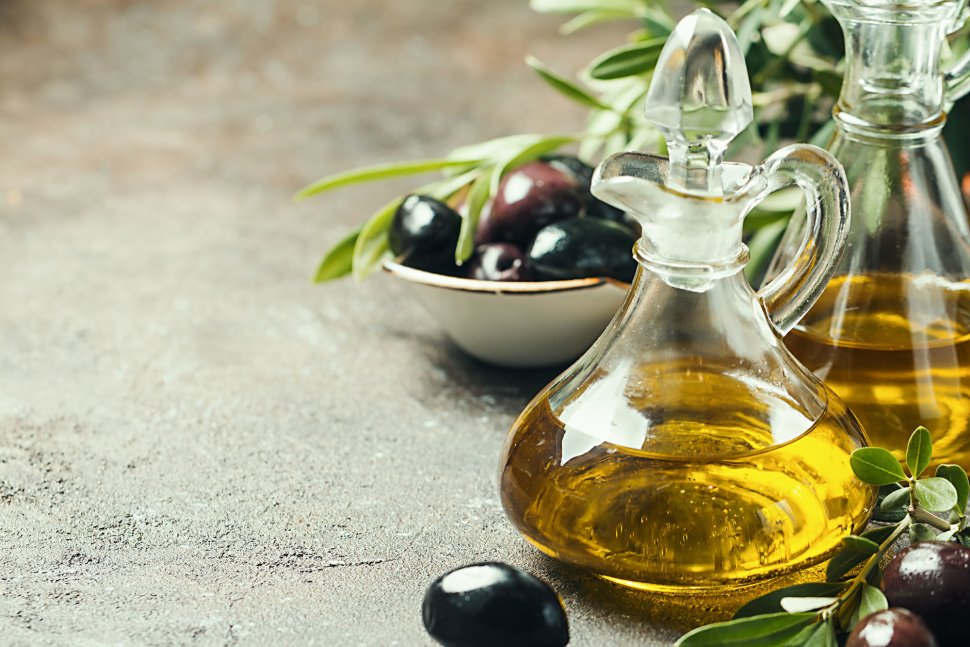Are you planning to switch to olive oil for cooking? The olive oil is indeed healthy and has good nutrition value. But how good is it for cooking? What should you know about utilizing olive oil as a regular cooking oil?
Table of Contents
Why is it healthy to use olive oil for cooking?
Olive oil is rich in monosaturated fat, which amounts to 73% of the oil. The main component of fat in this oil is oleic acid, which effectively reduces inflammation, prevents cancer, and promotes good health. The other main reason for using olive oil for cooking is the antioxidant content. The oil helps to reduce cholesterol levels, reduce the risk of heart conditions and other chronic problems. The oil also contains a small amount of Vitamin K and E.
Beyond these, olive oil also reduces the risk of Alzheimer’s disease, induces weight loss (when consumed moderately), inhibits harmful bacterial growth, and reduces the probability of diabetes.
Is it effective to use olive oil for cooking?
Many people do not prefer using olive oil for cooking. During cooking, oil’s fat structure gets broken, and it might turn into different by-products. This process is quite common with vegetable oils like canola oil, soybean oil, and so. However, olive oil is not rich in polyunsaturated fat. Thus, overheating olive oil will not generate aldehydes or lipid peroxide.
Olive oil has high levels of monounsaturated fat, which is resistant to heat. Thus, the temperature used for home-based cooking is not sufficient to break the fat into other components.
Oxidative damage while using olive oil for cooking
The main advantage of olive oil is its antioxidant content. However, when you use oil for cooking, the heat can induce the antioxidants to combine with oxygen, causing several harmful by-products. When you use olive oil for cooking, you need not worry about oxidative damage. Since the fat in olive oil is resistant to heat, the antioxidants do not readily combine with oxygen, even in high temperatures.
Many studies showed that virgin olive oil is resistant to heat-induced oxidation, even when used for deep frying. However, a non-virgin olive oil cooked for more than eight hours straight could have higher oxidative markers than unheated olive oil, yet lower than heated vegetable oil.
Does using olive oil for cooking increase trans fat?
There is a general misconception that using olive oil for cooking would increase trans fat due to heat. According to a study, deep frying olive oil for eight times only increased trans fat to 0.082% from 0.042%. Thus, you need not worry about trans fat, and olive oil is good for re-use too.
Will vitamins disintegrate during cooking?
Generally, when you heat a food item, the vitamin content disintegrates. However, since the smoke point of olive oil is very high, the chance of vitamin degrading is very low, but not zero. The smoke point of olive oil is between 190 degrees C and 207 degrees C. A pressure cooker temperature can easily reach 220 degrees C. Thus; olive oil is good for cooking with pans.
What happens when you use olive oil in a pressure cooker?
Cooking olive oil at 180 degrees C for 36 straight hours proved that the oil retains its vitamin content even after cooking. However, if you go beyond the recommended level (207 degrees C), vitamin E starts to disintegrate. Vitamin E is highly sensitive to heat. Thus, just 90 minutes in a pressure cooker is enough to reduce vitamin E and oleocanthal content considerably.
Oleocanthal is an active component in the oil, which gives the anti-inflammatory property to the oil. Heating in a pressure cooker (210 degrees C) could reduce the oleocanthal level by 19-31%. How about cooking it in low settings? Your pressure cooker’s low-pressure setting at just 3 psi would increase the content’s temperature up to 220 degrees. High-pressure settings can heat up to 250 degrees C. However, using it in the microwave for 10 minutes had little to no effect on the oleocanthal level.
Non-virgin vs. virgin vs. extra virgin oil – which is the best?
Non-virgin oils undergo heat treatment or chemical treatment for the purification process. Thus, a huge part of the fat content and antioxidants disintegrate long before the oil gets packed in the bottles. So, non-virgin oil is strictly not an effective method of cooking. Extra virgin oil is the type made from the first pressing of olives, which undergo manual grinding and pressing.
The extra virgin oil has a strong flavor and rich nutrient content. The pressed olives move on to get pressed for the second time to create the virgin olive oil. Virgin oil and extra virgin oil are cold-pressed and not chemically treated. However, due to the dense nutrients in extra virgin oil, it has a higher smoke point and better heat resistance than virgin oil.
If you plan to use olive oil for dressing or a quick stir-fry, virgin oil is a good choice. For traditional cooking and deep frying, extra virgin olive oil is the best option.
Bitter vs. non-bitter olive oil – which is best for cooking
The oil made from early harvested olives (slightly raw) is bitter. However, well-ripened olives create flavorful oil. Bitter oil has higher oleacein and richer nutrient content. When comparing bitter and non-bitter oil in terms of health elements, bitter olive oil is better. In terms of cooking, bitter and non-bitter olive oil react similarly to heat.
The bitterness creates a reflex, and the taste stays for a couple of seconds after swallowing. It takes a little practice to get accustomed to the taste. If you are trying olive oil for the first time, choose the non-bitter type.
Lastly, it is best to choose a good olive oil brand. Some brands would add an ‘extra-virgin oil’ tag to the label for marketing purposes. Thus, please read the label in detail, check whether it is for cooking, and always choose reliable brands.
